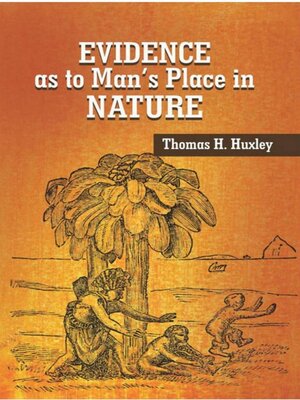
Sign up to save your library
With an OverDrive account, you can save your favorite libraries for at-a-glance information about availability. Find out more about OverDrive accounts.
Find this title in Libby, the library reading app by OverDrive.



Search for a digital library with this title
Title found at these libraries:
| Library Name | Distance |
|---|---|
| Loading... |
In 1863, the biologist and educator Thomas Henry Huxley published Evidence as to Man's Place in Nature, a compilation of his public lectures on Darwin's theory of evolution — specifically the controversial idea of the ape ancestry of humans. An energetic supporter of Darwin, Huxley's argues that in order to understand the universe, everyone must know their place in the natural world. The book is divided into three parts, each written with the aim of persuading lay audiences. The first covers earlier human beliefs about exotic animals, especially 'man-like' apes. In Part 2, Huxley suggests that every animal on Earth is related in that all go through developmental stages from an egg, whether the animal is 'a silkworm or a school-boy'. Part 3 involves a discussion of recently discovered Neanderthal bones and compares prehistoric craniums to modern human skulls.







